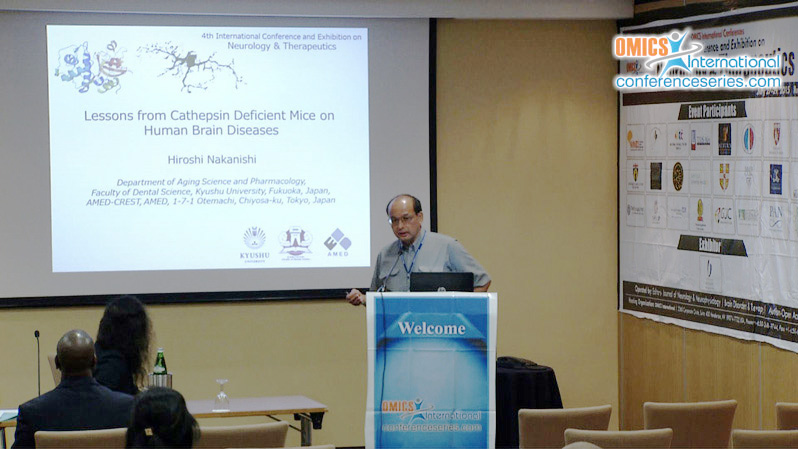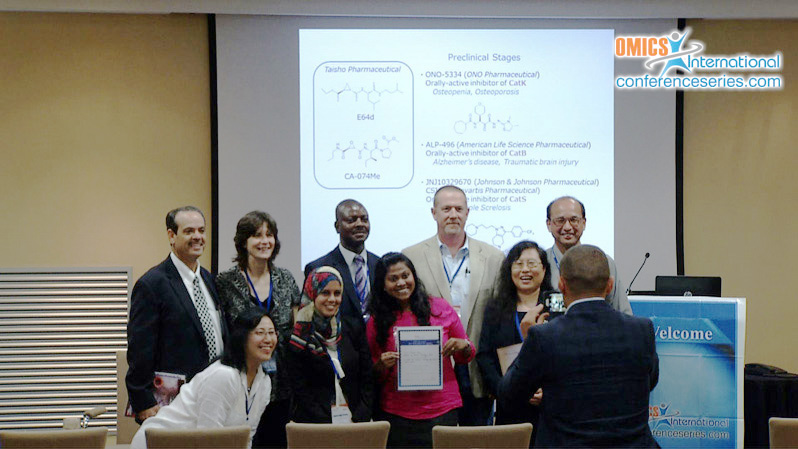
Hiroshi Nakanishi
Kyushu University, Japan.
Title: Lessons from cathepsin deficient mice on human brain diseases
Biography
Biography: Hiroshi Nakanishi
Abstract
A group of proteases in the endosomal/lysosomalproteolytic system have been designated as cathepsins, which is derived from the Greek term meaning “to digest”. Considering that cathepsins can irreversibly cleave peptide bonds, the primary function of cathepsins has been believed to be their “disintegration actions”. However, there is increasing evidence that cathepsins can also exert “modulator actions” by which substrates are activated after limited cleavage. For examples, we have recently found that cathepsin B (CatB) is involved in the maturation of pro-IL-1ï¢through proteolytic activation of pro-caspase-1 in the autophagosomes of spinal microglia following peripheral inflammation, leading to the induction and maintenance of inflammatory pain.On the other hand, cathepsin S (CatS) is involved in proteolytic processing of the MHC class II-associated invariant chain in splenicdendritic cells following peripheral nerve injury, leading to activation of CD4+ T cells. Infiltration of activated CD4+ T cells may contribute to transition of nerve injury-induced acute pain to a chronic pain state.Beyond a bulk proteolysis in the endosomal/lysosomal system, the growing understanding of modulator actions of cathepsins in microglia and other mononuclear phagocytes could contribute to the development of protease inhibitors as therapeutic interventions against brain diseases associated with chronic inflammation and immune response.


